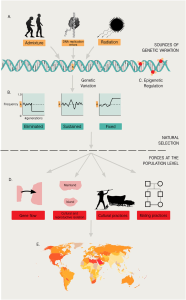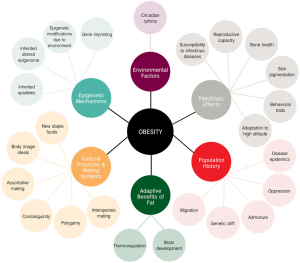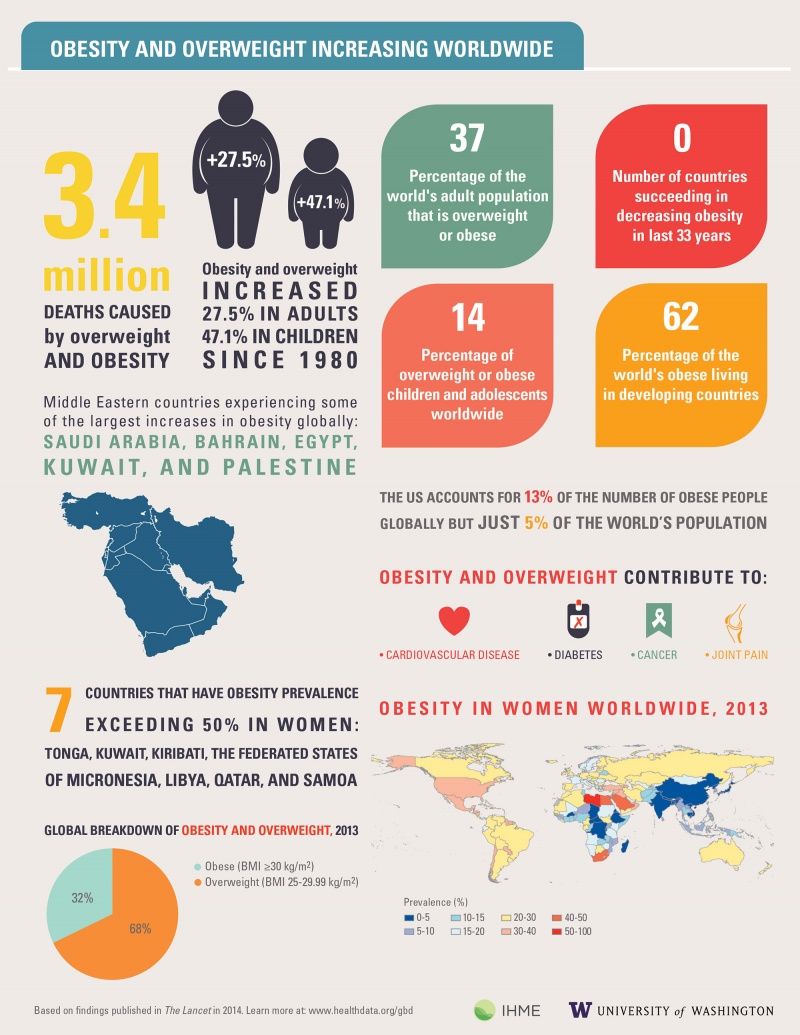For all intents and purposes, the genes of a person determine who they are. There are lots of important factors that make up your genes, the most commonly understood factor is the genes of your parents. The combination of your parent’s genes is enough alone to create a completely new set of genetic information, but that factor only scratches the surface of what is possible regarding genetics and how it impacts a person. In order to truly understand genetics and how they work, it is important to first understand what impacts your genetics outside of just your parents.
Genetics Throughout the History of Humanity
While genetics of an individual are primarily developed by their parents, there are many more direct factors that impact the genetics of an individual or even a population. The diagram below is an excellent demonstration of the various factors. For example, the average person can be exposed to radiation that completely changes them on a genetic level, hence why proper care is advised in the sun. But even after that happens, there are still many factors that influence the genetics of a population. This includes general gene flow, cultures becoming isolated, and certain cultural or mating practices. An example of this phenomenon would be if a community that was largely obese were to be cut off from the outside world, the prevalence of genetic obesity in that community would rise greatly throughout the generations. Therefore, genetics are much more than what comes from the parents. However, this is not the full story of genetics.

Epigenetics: A Rapidly Growing Field of Study
Epigenetics, simply put, describes all of the factors that impact how a gene functions outside of the classical understanding of genetics. The section above scratched the surface of epigenetics, but there are so many more things that impact exactly how the genes in our body function from day to day. The diagram below lists some examples of epigenetics in the classical sense as well as other important epigenetic factors that act on genes. Some of the highlights from this section are general epigenetics, cultural understandings of obesity, population history, and even direct benefits of obesity. A bit more on classical epigenetics, these are often changes that happen to our genes after they are created. One of them most common factors for epigenetic changes is exposure to the environment. For example, breathing in large amounts of toxins from the air can cause notable changes in how certain genes are expressed throughout the body.

Culture and Population History:
The culture and history of the people we live with can directly change how the genes in our body work. Some cultures believe that an obese body is more desirable than others, which would lead for that to become a more popular gene when considering a mating partner. Another interesting factor to consider about cultures is that some cultures practice polygamy, which would further spread genes from people that are powerful. Populations in general have a variety of ways they can spread genes. For example, if there were a disease that targeted non-obese people, then obesity would become a desirable and necessary gene to spread to populations impacted by the disease. It has even been noted that oppression of certain populations led to an increase of obesity, which opens a whole new door to targeted minorities experiencing negative health effects. These are a few examples of the many ways that identity can shape genetics before a person is even born. In conclusion, while each individual has their own genes, there are many different factors that influence the genetics of a person before a baby is even conceived. For the image source and to learn more about genetics and obesity, click here
Featured image taken from here
